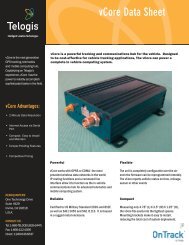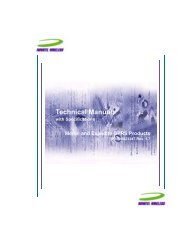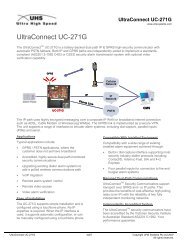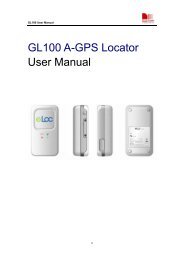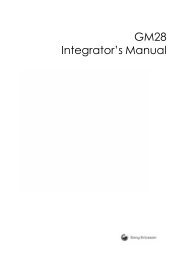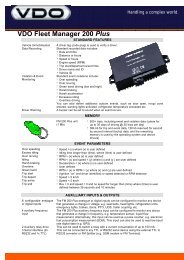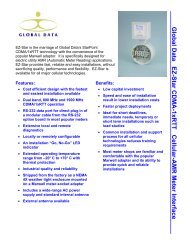Hardware Interface Description - KORE Telematics
Hardware Interface Description - KORE Telematics
Hardware Interface Description - KORE Telematics
Create successful ePaper yourself
Turn your PDF publications into a flip-book with our unique Google optimized e-Paper software.
XT55/56 <strong>Hardware</strong> <strong>Interface</strong> <strong>Description</strong><br />
Confidential / Released<br />
s<br />
7.2 Mounting XT55/56 onto the application platform<br />
There are many ways to properly install XT55/56 in the host device. An efficient approach is<br />
to mount the XT55/56 PCB to a frame, plate, rack or chassis.<br />
When assembling the XT55/56 module plug the B2B connector to the mating header in your<br />
application with applying carefully pressure to that side opposite to the B2B connector<br />
(labeled with “XT_GPS”).<br />
Fasteners can be M1.6 or M1.8 screws plus suitable washers, circuit board spacers, or<br />
customized screws, clamps, or brackets. Screws must be inserted with the screw head on<br />
the bottom of the XT55/56 PCB. In addition, the board-to-board connection can also be<br />
utilized to achieve better support.<br />
Particular attention must be paid to the holes marked with an arrow in Figure 50.<br />
The two holes are close to other components of XT55/56 and care must be taken to avoid<br />
contacting them. For example, you can insert plastic screws and plastic washers, or<br />
fasteners small enough not to protrude beyond the mounting areas specified in Figure 51.<br />
In case you wish to connect the host device using the mounting hole enclosed by the dashed<br />
line it is strongly recommended to use a plastic dowel according to Figure 53. For ordering<br />
instructions refer to Table 39.<br />
Figure 52: Mounting holes on XT55/56<br />
For proper grounding it is strongly recommended to use the ground plane on the back side in<br />
addition to the five GND pins of the board-to-board connector. To avoid short circuits ensure<br />
that the remaining sections of the XT55/56 PCB do not come into contact with the host<br />
device since there are a number of test points. Figure 50 shows the positions of all test<br />
points.<br />
To prevent mechanical damage, be careful not to force, bend or twist the module. Be sure it<br />
is positioned flat against the host device.<br />
All the information you need to install an antenna is summarized in Chapter 5. Note that the<br />
antenna pad on the bottom of the XT55/56 PCB must not be influenced by any other PCBs,<br />
components or by the housing of the host device. It needs to be surrounded by a restricted<br />
space as described in Chapter 5.1.2.<br />
XT55/56_hd_v02.06a Page 112 of 125 17.12.2004



